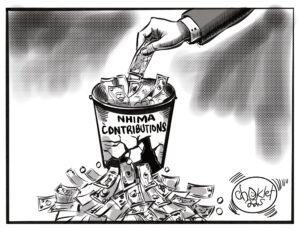In this article, I argue that amid Zambia’s high Public debt levels, China is an important developmental partner for Zambia because of Chinese FDI and aid, but Zambia will need to leverage this relationship to bolster its own industrial development.
China’s economic presence in Africa is remarkable; not only has it rapidly become the continent’s major trading partner, but it is also Africa’s largest equity investor as measured by foreign direct investment (FDI). There is much skepticism about the nature and intentions of Chinese capital in Africa; some see it as exploitative of both Africa’s natural and human resources, but such conversations tend to ignore that China itself is the largest recipient of global FDI. China has successfully leveraged global FDI to bolster its own industrial strength, transforming its economy so rapid that its developmentalism has been regarded as a super-miracle, lifting hundreds of millions of people out of poverty in under four decades since introduction of landmark market reforms in trade and investment. Seventy percent of the value of Chinese FDI in Africa is accounted for by Chinese private companies, constituting 90% of total Chinese companies investing on the continent. China’s FDI stock in Africa totaled $110 billion in 2019, and this contributed to over 20% of the continent’s economic growth.
FDI is an important source of capital, particularly for developing countries who are unable to raise sufficient domestic resources to meet their developmental needs. FDI contributes to employment, income, trade as well as expansion of the host nation’s industrial capacity if leveraged properly. In addition, FDI is a channel through which human development and managerial qualities can be enhanced by transfer of skills and technology through labour training and transmission of business management skills.
Meanwhile, Zambia, like most developing countries, lacks capacity for adequate domestic resource mobilization. One way to examine a country’s capacity to finance its own development is to look at the tax-to-GDP ratio. Advanced countries (OECD) averaged 34.3% in terms of tax-to-GDP ratio in 2018, while Africa averaged only 16.5%. Prior to the Covid-19 pandemic, Zambia’s tax-to-GDP ratio averaged only 16% in 2019 but the figure dropped to 14.7% in 2020 largely due to the adverse effects of the Covid-19 pandemic. Inability to collect adequate revenue domestically has forced developing countries to borrow externally.
Zambia’s current debt debacle is not new, but it is different. In 2004, Zambia’s Government’s total external debt stood at US$6.6 billion, but in the aftermath of the 2005 completion of the so-called Highly Indebted Poor Countries Initiative, in 2006 the figure dropped to only US$1 billion. In 2004, virtually all of Zambia’s external creditors were the traditional multilateral and bilateral lenders. In 2011, when total public external debt was US$1.98 billion, Zambia’s public external debt servicing costs were only US$34.14. By 2020, Zambia’s total public external debt had risen rapidly to US$12.74 billion, and most of Zambia’s external debt was owed to commercial creditors, while only 18 percent was owed to the traditional multilateral and bilateral lenders. Debt owed to China alone (State and private lenders) is estimated at about 27 percent of Zambia’s total Central Government debt. As debt levels soared, so too did debt servicing costs; in 2019, prior to the Covid-19 pandemic, when Zambia experienced a real GDP growth of less than 2%, public external debt servicing had risen to US$944.4 million. The Zambian Government has also borrowed locally: domestic debt excluding arrears was K130 billion by 2020, 9% higher than the 2021 National Budget of K119 billion.
In fact, the data shows that Zambia has been running a fiscal deficit over the years, in tandem with the explosion of public debt. Between 2015 and 2019, the budget deficit had peaked in 2019 at 9.1 percent. However, the data suggests that the Covid-19 pandemic exploded the budget deficit even further to 14.4 percent well above the target of 5.5 percent.
To be blunt, the fiscal situation shows that Zambia has limited fiscal space to finance its own developmental aspirations. Nevertheless, there is hope for the country, partly due to China’s economic presence and goodwill. Responding to a question I asked during a media briefing organized by the Zambia-China Friendship Association, the Chinese Ambassador to Zambia, His Excellency Mr. Li Jie, shed light on Chinese FDI inflows into Zambia and nature of Chinese relationship with its host country, Zambia. In 2020, Chinese investment into Zambia totaled about US$500 million, ranking Zambia number one in terms of Chinese investment into the African continent in that year. Loans from China to Zambia have gone towards tangible assets in infrastructure, energy, mining, agriculture, and manufacturing. The extent to which such capital accumulation provides immediate economic gains is limited; there are however lasting long-term benefits to both promote and underpin broad-based development. China has also actively participated in the Debt Service Suspension Initiative as a G20 country, and by using an approach of cordiality and friendship in debt relations, China has agreed to debt restructuring as well as waiving of at least 150 million Yuan (about US$24 million) to encourage Zambia to mount more prudent public financial management strategies.
Mr. Li Jie intimated that China’s hope was to assist Zambia to eventually walk out of debt. In next week’s article, drawing on field visits made in Lusaka province to Chinese enterprises on 02 June and 03 June 2021, I will chronicle how Chinese investment in the country can be leveraged to bolster Zambia’s industrialization despite high levels of public debt.
About the Author
Dr Gabriel Pollen is a Senior Researcher (Public Finance Management) at the Centre for Trade Policy and Development (CTPD) and a Lecturer with the University of Zambia, Department of Economics.
























